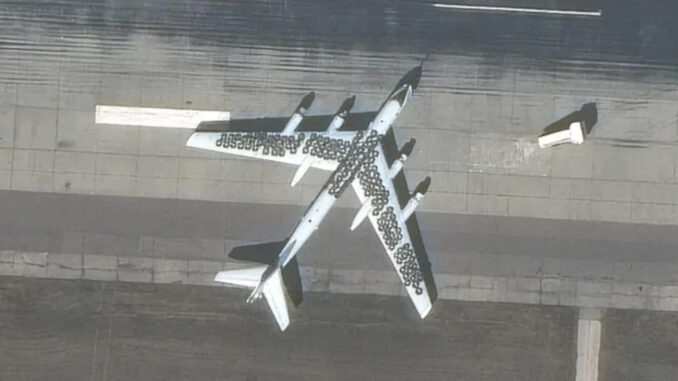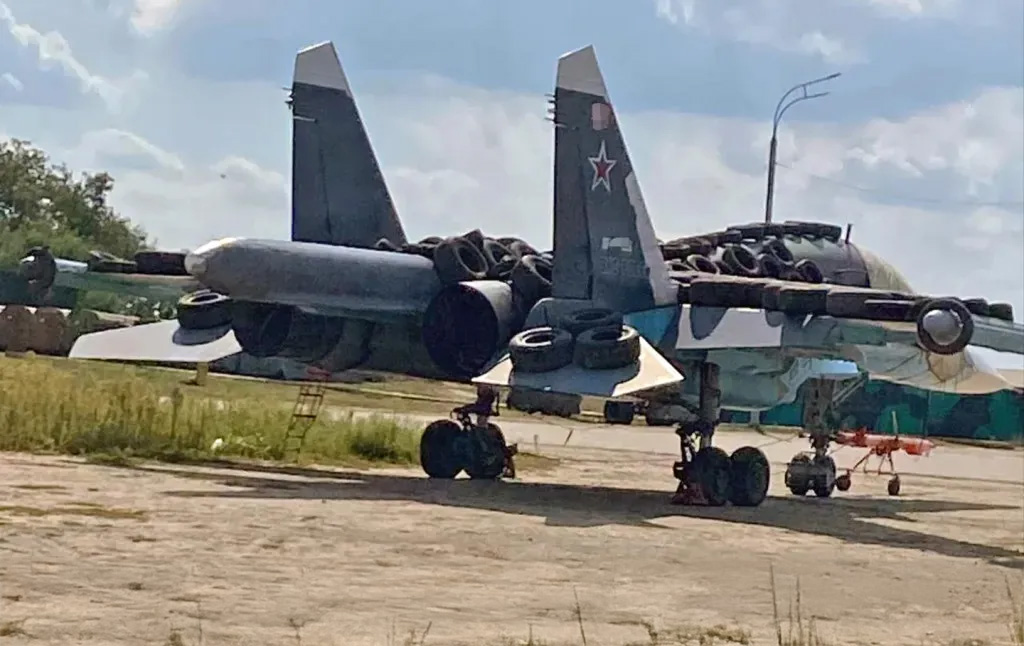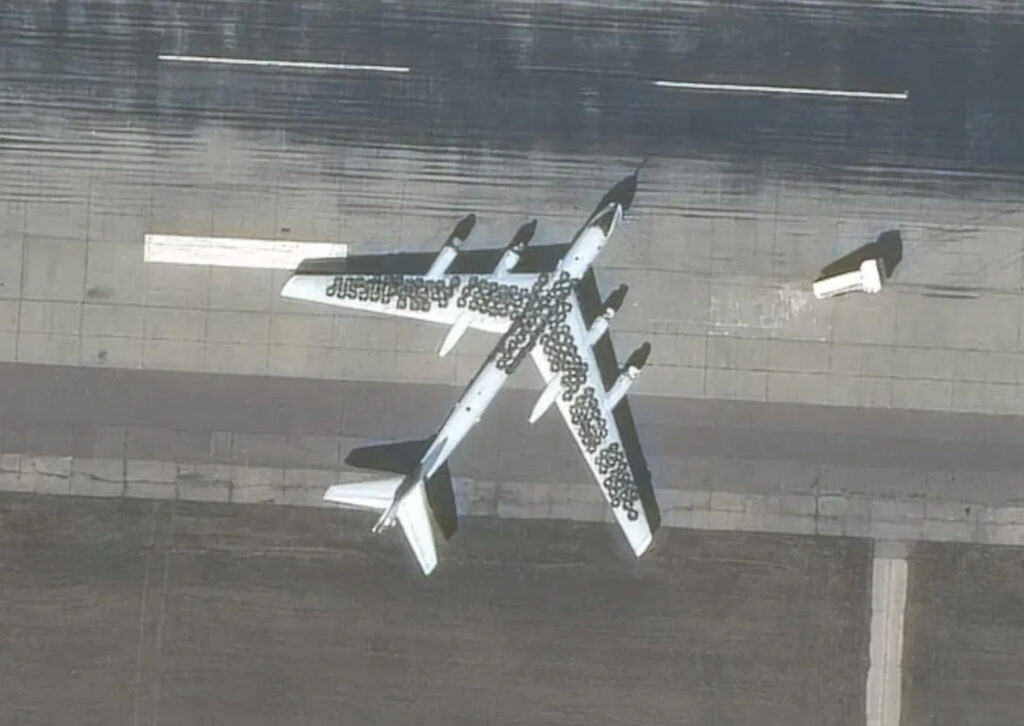
Using tyres to disrupt image-seeking missiles: a Russian strategy confirmed by US military experts.
The Russian air force is using a new tactic to disrupt image-guided missile and drone systems. By placing tyres on the wings of their aircraft, particularly Tu-95s, they confuse missile sensors that use image models to target. This method, confirmed by US military authorities, reflects wider challenges associated with the use of artificial intelligence (AI) in military operations. This strategy is an example of how Russia is adapting its defences in the face of modern threats and could influence the evolution of future military tactics, particularly with the development of AI.

Russian tactic of camouflaging aircraft with tyres
The use of tyres on Russian Tu-95 and Tu-160 bombers, first spotted in 2023, represents a deliberate attempt to disrupt image-guided missile systems. Modern weapons systems, such as SCALP-EG missiles or UAVs, often rely on sensors capable of recognising objects based on pre-programmed images. These systems use machine learning techniques to analyse the visual signature of an aircraft and adjust their trajectory to hit the target.
By adding tyres to the fuselage and wings, Russia modifies the overall silhouette of the aircraft. The missile sensors are then unable to recognise these objects as aircraft, thereby disrupting their trajectory. This ploy does not require advanced technology, but relies on exploiting the limitations of the image algorithms used by modern weapons systems. This method could lead to a loss of missile accuracy and increase their failure rate, which indirectly protects Russian military assets. In practice, the missiles would miss their targets because the pre-programmed image would not correspond to the visual reality altered by the tyres.
The direct consequences of this technique are significant: the costs of failed missiles increase, in particular due to the advanced on-board technology, estimated at several million euros per unit (for example, a SCALP missile costs around €850,000). In addition, failed strikes increase the need for repeated attacks, adding to the logistical and operational costs of enemy forces.
The role of artificial intelligence in the evolution of military tactics
Russia’s use of tyres is clear evidence of the current limitations of systems based on artificial intelligence (AI). Visually guided sensors, while effective, depend on pre-existing models and recognition algorithms that can be circumvented by simple physical changes. This situation highlights a key point: AI models used by military systems must evolve rapidly to remain effective against adaptive adversaries.
Schuyler Moore, Chief Technology Officer at CENTCOM, stressed that military forces must be able to update their algorithms in real time to respond to changes in the enemy. This flexibility is essential in a context where simple camouflage solutions, such as adding tyres, can render missile systems obsolete in an instant. AI offers a rapid response capability, but access to real-time data models is crucial to maintaining optimum effectiveness in the field.
Continuous improvement of systems is necessary, but it must be accessible to the soldiers and technicians directly involved in operations. If models take several months to update, the rapid visual adaptations of enemies, such as tyres or tarmac paint, will continue to confuse the algorithms. The effectiveness of AI systems will therefore be limited by their ability to rapidly integrate and analyse new information.
The link between Russian tactics and future US strategies
The lessons learned from Russian tactics are of crucial importance to the US Army. The US military is increasingly focused on preparing for potential conflicts in the Pacific, particularly against China, which has advanced satellite surveillance and intelligence capabilities. Camouflage and deception techniques are becoming increasingly important in this context. US forces are looking to develop sophisticated strategies to counter AI sensors, which are capable of spotting and identifying objects of interest over vast distances.
This means that the military must not only improve its detection capabilities, but also develop more credible decoys. As General David Allvin points out, it is no longer enough to inflate a fake aircraft to fool the enemy. Deception strategies must mimic real signatures, both visual and behavioural, to fool sophisticated algorithms.
Russia has also tried to use visual decoys, such as painting aircraft silhouettes on the tarmac or creating fake submarine structures. This type of camouflage, although rudimentary, is an indicator of future trends in concealment tactics. Advanced sensors, particularly those based on AI, must be able to distinguish between real targets and decoys to maintain their effectiveness. This development underlines the need for US systems to have flexible and constantly updated AI models.

The future of artificial intelligence warfare
The observations made in Ukraine have a scope that goes far beyond this conflict. They show how AI and image recognition algorithms will redefine military strategies. Camouflage and deception are no longer concepts limited to the Second World War, but central aspects of future conflicts, particularly in environments saturated with sensors and AI systems.
The United States, like Russia, must anticipate the technological developments that will make it possible to jam these systems. We are likely to see a race of adaptation between detection systems and decoy tactics, with each seeking to gain an advantage over the other. The financial and strategic costs will be considerable, as each new technological development will require an equally costly response in terms of developing new technologies and training forces.
Current systems, while advanced, are only the beginning of an era where AI will play a central role in the identification and engagement of military targets. Today’s events in Ukraine are the first signs of this global transformation of the battlefield.
War Wings Daily is an independant magazine.